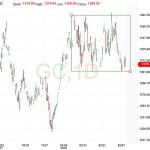ETFs and factor investing are on the tip of everyone’s tongue these days. Factor investing is being couched as a “new” thing, despite the fact that institutional investors have been deploying these strategies for years. (See this working paper discussing the effective use of smart beta strategies by institutional investors.)
However, because factor investing is now directly accessible via ETFs, those who are unfamiliar with factor investing are asking questions about how these “new” funds will affect the market.
Two burning questions many investors have:
These are great questions and they have been examined in a few papers recently.(1) There have been arguments on both sides of the aisle:
So which is correct? The AQR folks use trading costs from trillions of dollars of live trades, while the 4 papers claiming transaction costs are large for momentum use academic model-based estimated trading costs. The AQR paper highlights the difference in the cost of trading using their live data versus the academic model-based estimated trading costs.
Regardless of which side of the aisle you sit on, there is definitely a “maximum” amount of money that can be chasing the momentum factor (as well as the other factors).(2)
Clearly there have to be some capacity constraints on “smart beta” strategies, but the real question is how much capacity?
A newer paper by Ronald Ratcliffe, Paolo Miranda, and Andrew Ang titled “Capacity of Smart Beta Strategies: A Transaction Cost Perspective” examines this issue. It should be noted that the authors work for Blackrock, and similar to the AQR crew, these authors find that the capacity of smart beta is larger than most academic model-based estimated trading costs. One argument is that these sources are biased (which is true), but another argument is they have actual transaction data (which is much more accurate than the TAQ data used in academic work). Given that papers based on TAQ data suggest that it costs over 1.59% a year to trade the S&P 500 index, whereas live data suggests it only costs 6bps (which is closer to what firms like Vanguard estimate), we can feel pretty confident that capacity studies based on actual trading data are more accurate than academic constructs.(3)













Leave A Comment